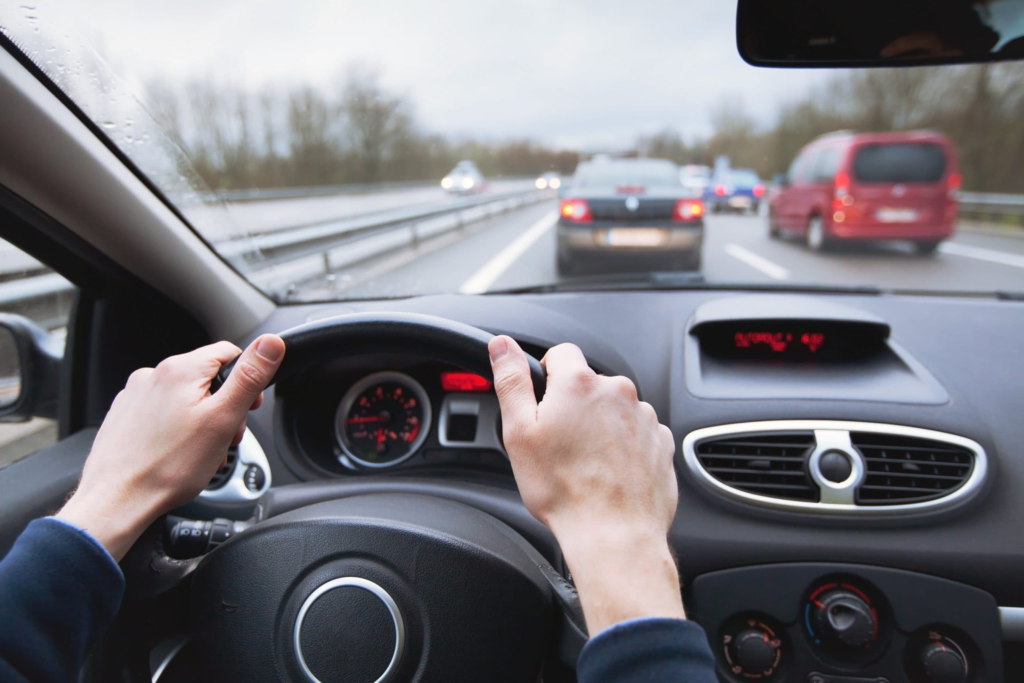
When it comes to vehicle safety, understanding braking distance is crucial for drivers who want to ensure they can stop quickly and effectively in emergency situations. Braking distance is the measure of how far a vehicle travels from the moment the brakes are applied until it comes to a complete stop. This metric plays a vital role in vehicle safety, influencing how well a car can avoid collisions and respond to unexpected obstacles on the road.

1. What is Braking Distance?
Braking distance refers to the distance a vehicle travels from the instant the driver applies the brakes to the point where the vehicle has fully stopped. This measurement is crucial for assessing a vehicle’s braking efficiency and overall safety. Braking distance is influenced by various factors, including vehicle speed, road conditions, tire quality, and the effectiveness of the braking system.
2. Factors Affecting Braking Distance
Several factors impact braking distance, each playing a critical role in determining how quickly a vehicle can come to a halt.
- Speed: The speed at which a vehicle is traveling significantly affects braking distance. Higher speeds result in longer braking distances because the vehicle covers more ground while decelerating. The relationship between speed and braking distance is not linear; doubling the speed can increase the braking distance fourfold.
- Road Conditions: The surface of the road plays a crucial role in braking performance. Wet, icy, or uneven surfaces can reduce traction, increasing braking distance. Conversely, a dry, well-maintained road provides better grip and shorter stopping distances.
- Tire Condition: Tires are the primary contact between the vehicle and the road, making their condition vital for effective braking. Worn or under-inflated tires can reduce traction and increase braking distance. Regular tire maintenance ensures optimal performance and safety.
- Braking System: The effectiveness of a vehicle’s braking system also influences braking distance. Modern vehicles are equipped with advanced braking technologies such as anti-lock braking systems (ABS) and electronic brake-force distribution (EBD) that enhance braking performance and stability. Well-maintained brakes ensure shorter stopping distances and better overall safety.
- Vehicle Load: The weight of the vehicle and its cargo can impact braking distance. Heavier vehicles require more distance to stop due to the increased momentum. Properly loading and distributing cargo can help maintain effective braking performance.
3. Measuring Braking Distance
Braking distance is typically measured under controlled conditions, such as on a test track, to ensure accuracy. During these tests, vehicles are driven at a specific speed, and the distance from the point where the brakes are applied to the point of complete stop is recorded. This standardized measurement allows for comparisons between different vehicles and provides insights into their braking capabilities.
4. Real-World Implications

In real-world driving, braking distance can be affected by a variety of dynamic factors, including driver reaction time, road conditions, and environmental factors. The total stopping distance is the sum of the braking distance and the driver’s reaction time, which is the time it takes to perceive a hazard and apply the brakes. For effective safety, drivers should maintain a safe following distance and adjust their speed according to road conditions and traffic situations.
5. Improving Braking Distance
Drivers can take several steps to improve braking performance and reduce stopping distances:
- Maintain Vehicle Components: Regularly check and maintain brakes, tires, and suspension systems to ensure they are in good condition.
- Drive Cautiously: Adjust driving speed according to road conditions and weather. Avoid sudden stops and sharp turns that could affect braking performance.
- Increase Following Distance: Maintain a safe distance from the vehicle in front to provide ample space for stopping if necessary.
6. The Future of Braking Technology
Advancements in automotive technology continue to enhance braking performance. Innovations such as adaptive cruise control, automatic emergency braking, and advanced driver-assistance systems (ADAS) are designed to improve safety and reduce braking distances. As technology evolves, these systems will further contribute to effective braking and overall vehicle safety.
Conclusion
Braking distance is a critical measure of a vehicle’s safety and performance, influencing how quickly it can come to a stop in various driving conditions. By understanding the factors that affect braking distance and taking proactive steps to maintain vehicle components, drivers can enhance their safety and responsiveness on the road. As automotive technology advances, the ability to stop quickly and effectively will continue to improve, offering greater peace of mind and protection for drivers and passengers alike.







